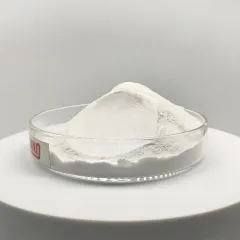- Home
- Products
- Elementary
- Boride Powder
- 3D Printing Powder
- Sulfide Powder
- Oxide Powder
- Carbide powder
- Nitride Powder
- Silicide Powder
- Hydride Powder
- Telluride Powder
- Selenide Powder
- Stearic Acid Series
- Phosphide Powder
- Nanoparticles
- Metal Alloy
- MAX Phase
- Lithium Battery Anode
- Surfactant
- Molecular sieves
- Concrete Admixtures
- Cladding of metals
- News
- Blog
- Contact
- About
Sodium Hexametaphosphate
Sodium hexametaphosphate (NaPO3) is an organic substance that has molecular formula 6. Sodium Hexametaphosphate, a white powder crystal, is a transparent colorless sheet of glass or block solid. Insoluble in water; soluble in most organic solvents.
Description of Sodium Hexametaphosphate:
Regarding chemical properties, sodium hexametaphosphate is very acidic, its aqueous solution is strongly acidic, and its pH value is low. It is a medium-strength acid that can form salts with metal ions and has a strong complexation ability. In addition, sodium hexametaphosphate oxidizes and can oxidize certain substances under certain conditions.
Regarding physical properties, sodium hexametaphosphate has a high melting and boiling point and is not easy to volatilize. It is denser than water, has higher stability, and cannot decompose quickly. The solubility of sodium hexametaphosphate is significant, and it can form a transparent solution in water without precipitation or suspension.
In addition to the above properties, sodium hexametaphosphate has some other characteristics. For example, it is an inorganic compound that does not contain organic impurities and has good chemical purity and stability. In addition, the price of sodium hexametaphosphate is relatively low, and it can be produced and used in large quantities.
In medicine, sodium hexametaphosphate can prepare drugs with antibacterial, anti-inflammatory, anti-tumor and other effects. In chemical engineering, sodium metaphosphate can prepare various phosphates for fertilizers, plastics, coatings and other materials.

Technical Parameters of Sodium Hexametaphosphate
| Articles | Total phosphate in P2O5 | Active phosphate is P2O5 | Water that is not soluble | Fe | PH (1% Solution) | Arsenic | Heavy metals( Pb) | Fluoride |
| Standard | Min. 68.0% | Maximum 7.5% | Maximal 0.1% | 500ppm | 5.8-6.2 | Minimum 3ppm | Minimum 10 ppm | Max. 0.0030% |
Applications of Sodium Hexametaphosphate:
The field of medicine
In medicine, sodium hexametaphosphate can prepare various drugs with antibacterial, anti-inflammatory, anti-tumor and other effects. For example, sodium hexametaphosphate can form complexes with specific metal ions to treat diseases like cancer.
Chemical industry
In chemical engineering, sodium metaphosphate can prepare various phosphates for fertilizers, plastics, coatings and other materials. For example, sodium hexametaphosphate can be reacted with sodium hydroxide to produce sodium phosphate salt, which is used to produce phosphate fertilizer and compound fertilizer. In addition, sodium hexametaphosphate can also be used as an additive in the production of plastics, coatings and other materials to improve the performance and stability of materials.
Water treatment field
Sodium hexametaphosphate is also widely used in the field of water treatment. It can be used as a scale inhibitor and corrosion inhibitor to prevent the formation of scale and corrosion of metal. For example, sodium hexametaphosphate can inhibit scale formation in industrial cooling water and improve cooling efficiency. In addition, sodium hexametaphosphate can be used to prepare water treatment agents, cleaning agents, etc., for purifying water quality and cleaning equipment.
Production Method of Sodium Hexametaphosphate:
Chemical synthesis
Chemical synthesis is one of the leading production methods of sodium hexametaphosphate. This method synthesized sodium hexametaphosphate by chemical reaction using orthophosphate as raw material. The specific steps are as follows:
The phosphoric acid is heated to a specific temperature, and an appropriate amount of catalyst, such as sulfuric acid, sodium sulfate, etc., is added.
Under a certain pressure, maintain a particular reaction time for orthophosphate polymerization reaction, oligophosphate.
The hypophosphate was further heated and polymerized to obtain sodium hexametaphosphate.
The sodium hexametaphosphate product was obtained by centrifugal separation and drying.
The advantages of chemical synthesis are a mature production process, large yield and stable product quality. However, this method needs to use a lot of acid substances such as sulfuric acid, which is particularly polluting to the environment. In addition, the reaction conditions of this method are relatively harsh, requiring high temperature and high-pressure conditions, so the production cost is high.
Pyrolysis method
Pyrolysis is when orthophosphate or oligophosphate is decomposed into sodium hexametaphosphate by heating it. The primary raw material of this method is orthophosphate or oligophosphate, which is decomposed by high-temperature heating and then processed by crystallization and separation; sodium hexametaphosphate product is obtained.
The advantages of pyrolysis are a simple production process and low cost. However, this method requires high-temperature equipment, and the high-temperature resistance performance of the equipment is required. In addition, the quality of pyrolysis products is slightly inferior to that of chemical synthesis, and there may be problems with darker colors and lower purity.
In actual production, different production methods can be selected according to different needs and raw materials. For large-scale, high-quality production, chemical synthesis is more suitable; For small-scale, low-cost production, the pyrolysis method is more suitable. At the same time, paying attention to environmental protection and safety in the production process is necessary.
Be aware
This is
Sodium Hexametaphosphate
1.
Sodium Hexametaphosphate
Non-toxic, harmless and biodegradable. It cannot be eaten.
2. If
Sodium Hexametaphosphate
It should not get in your eyes.
3. A doctor should be consulted immediately if allergies are caused to any portion of the body.
Inquiry us
PREVIOUS Concrete Admixtures
NEXT Concrete Admixtures